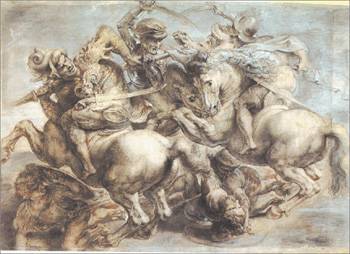| The different brushes can paint on all of the image's channels at once or on the individual red, green, blue, or alpha channels separately using the R, G, B, and A buttons. For example, if you wanted to touch up only an alpha channel, you would turn off the RGB channels.  There are five basic brush types, with one modifier to change the drop-off on any of those types. The basic paint tools are as follows: Button | Name | Action |  | Hard/Soft toggle | Paints any brush type with a soft falloff; it isn't a brush, it just modifies other brushes. |  | Hard/Soft toggle | Paints any brush type with a hard falloff. |  | Paint brush | Applies RGBA color to the first input. |  | Smudge brush | Smears pixels around; always use the Hard/Soft toggle's hard setting with this tool. |  | Eraser brush | Erases previously applied paint strokes only, without affecting the background image. |  | Reveal brush | Exposes whatever is in the second image input; if no second image input exists, it acts as an Outside node, punching a hole through both the paint and the first input source. |  | Clone brush | Copies from whatever is created by the paint node or whatever comes from the first image input; to move the brush target relative to the source, use Shift-drag. |
1. | Make sure you are in Paint mode, and select the Paint brush.
| 2. | OK, now you can paint. Just don't make a mess.
| 3. | To control the brush size, use Control-drag. You can set the size numerically in the Parameters workspace as well.
Here's a little something I sketched up in five minutes:
 OK, I am not really that good at painting with a mouse, but some of you no doubt will already have a masterpiece on the screen.
|
|
